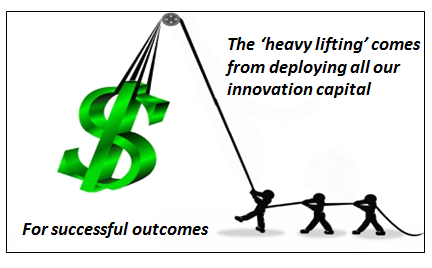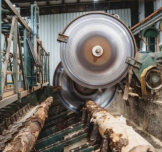You are here
What makes up your Innovation Capital?

If someone came to you and asked the question: “tell me what makes up your financial capital?” I expect you could answer this fairly comfortably. It might need a little-added help from your finance department but you could produce and show significant details that we are all ‘schooled’ to understand and generally have accepted, as under common definitions and standard practice. Our businesses are measured constantly on their financials, we produce a constant flow of reporting documents that provide useful insight and allow for a more informed judgement by present and future investors on the health of the company. We are ‘wedded’ to our financials and ignore the real value within our organisations of all the other critical capitals that generate and strengthen the business. What if that same person came to you and asked instead: “what makes up the innovation capital of the company?’” could you answer this as clearly as the financial one – I would suggest most probably not. We are focusing more on past performance and not future generating potential by staying fixated on just the financials within all that makes up our organisational capital and innovation is future orientated, so you would naturally have a problem to answer this. So what makes up our innovation capital and why is it important to know? Should we care, does it matter? I would argue it does, increasingly so. Within the innovation, capital lies the future of the organisation and holds one of the real golden keys to the sustaining performance of the company, or not. The generally accepted view is that Innovation boosts a company’s earnings, speeds growth, ensures an advantage over competitors, and greatly appeals to shareholders. Lets put it another way, businesses that deliver earnings growth based upon a continuous stream of new products and services and new ways of doing business capture the innovation premium and that drives shareholder interest to continue to invest. So tell me, why are we seemingly so bad at identifying what actually makes up our innovation capital, apart from some sweeping generalised statements attached in the accompanying comments within the financial result statements? We need to find a way to unlock this as we are constantly being pushed for new business models that create, deliver and capture value. It is in the entire makeup, the value structure around the offering, and this is made up of distinct capitals that drive the new business towards success. How do I define innovation capital? “Innovation capital is the sum of all that promotes the development and changes required for achieving innovation outcomes, within one organisation or its broader networked environment, for marketplace advantage”. “These are made up of the resources, processes, knowledge and capabilities, that are constantly evolving and highly dynamic to build greater innovating capacity.” These innovating capitals build upon the capabilities of ‘sensing, seizing and transforming‘ so as to build new capital that focuses more upon the dynamics within innovation. You are searching for what makes-up and provides the true value creation in successful outcomes; in final product, services, knowledge understanding or executing within further business models” Mostly this innovation capital comes from the different intellectual capitals, those unique sums within each organisation, of knowledge made up of within our human assets, organisational structures and social partners making up the organisations ecosystem formed around evolving relationships. It is when we bring these together in different, evolving ways we transform the knowledge into new economic value, through this organisation and personal actions. Financial capital cannot do that, it can only fuel the other capitals. Within these transforming, more dynamic and evolving capitals we do the heavy lifting to generate the value in the business, these are the true wealth-creating capitals. If we had a better understanding of the make up the innovation capital, and what makes up its critical enablers, then we are better positioned to qualify and even quantify a more confident future, based on the capital that ‘feeds’ the future potential. Holding the future back We need to understand the strategic importance of the make-up of the innovation capital and presently most corporate boards lack any clear line of sight into this. It holds innovation back, it constrains growth, it makes us cautious of the future, if we don’t fully understand the make-up of our capital. I think it is the time we did.


































































EgyptInnovate site is not responsible for the content of the comments